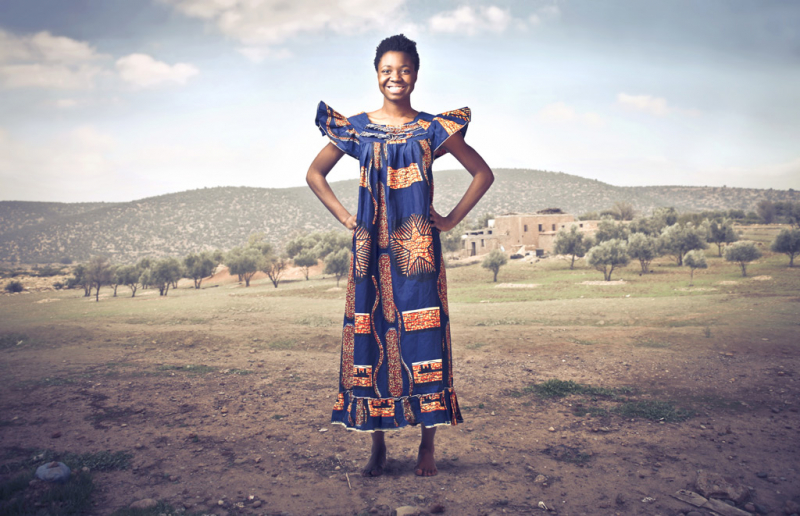
Ancient monasteries, the Tvertsa and Volga spit, the museum of urban life and Pozharsky cutlets. Tver and Torzhok are not included in the route of the famous Golden Ring, but they have the undeniable charm of the Russian province with its tranquility, natural beauty and streets breathing history. Empress Catherine the Great herself loved these places; Alexander Sergeevich Pushkin stayed here more than once. Over the weekend we will travel back in time, follow in their footsteps and learn more about what ancient Torzhok and the capital of the Upper Volga region Tver are famous for.
How to get there
By personal car
Tver is located 140 km northwest of Moscow. By private car the journey will take about 2–3 hours. The optimal route runs along the E105 and M-9 highways (toll road). To get to Torzhok by car, you need to continue along the E105 highway.
By train
More than 20 trains depart from Leningradsky Station to Tver every day. The fastest way to get there is by Lastochka: travel time 1 hour 40 minutes.
You can get to Torzhok on your own only by train or Lastochka from Tver: there are two morning flights, two afternoon and three evening flights. A ticket for one direction costs 300–400 rubles*.
By bus
Regular buses run from Moscow to Tver and back approximately once an hour (departure from Domodedovo, Vnukovo and Sheremetyevo airports and Salaryevo bus station), travel time is from 2.5 to 5 hours. Ticket prices range from 800 to 1,400 rubles one way*.
There are also buses from Tver to Torzhok and back, the journey will take an hour and a half, and the ticket will cost about 300 rubles*.
Where to stay
Tver
In Tver it is better to stay in the central area.
For example, at the Zvezda Hotel (score 10 out of 10). The main points of the traditional walking route are within walking distance: the Traveling Palace, the Volga embankment, the Ascension Cathedral. Room rates start from 8,000 rubles per double room per night*.
Almost next door is the Governor Hotel (score 9.1 out of 10). There is a cluster of cafes and restaurants around it. Prices from 5,000 rubles for double occupancy per night*.
The Berg Haus hotel is more distant from the main attractions (score 9.1 out of 10), but this is compensated by the excellent cuisine in the hotel restaurant, as well as the prices: the cost for a double room is from 3,600 rubles*.
Torzhok
In the heart of Torzhok, within walking distance from the Boris and Gleb Monastery and in historical buildings, there are the Atmosphere and Onyx hotels.
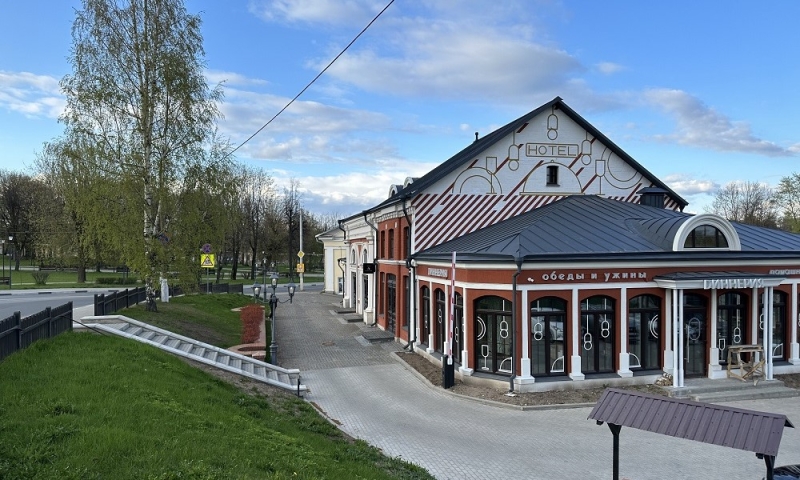
Hotel “Atmosphere”. Author: Maria Balareva
Prices per night in a double room in the Atmosphere mini-hotel — from 5,000 rubles*, there are discounts. The territory is well-groomed, next to the park and the Zdorovets stream.
Double accommodation at the Onyx Hotel (rating 9.2 out of 10) costs from 4,100 rubles per night*. In the hotel restaurant of the same name you can try Novotorzh cuisine (for example, Pozharsky cutlets according to two recipes).
Hotel “Staroyamskaya” (rating 9.3 out of 10) is located a five-minute taxi ride from the railway station. Guests have at their disposal a free swimming pool, Finnish sauna, and bowling alley. The cost of a double room per night is from 4,000 rubles*.
What to see in Tver
Phoenix City

The outskirts of Tver. Author: Maria Balareva
Like many provincial cities in Russia, Tver amazes with its contrasts from the first minutes of your stay. Having overcome the jungle of new residential complexes and dilapidated wooden houses almost swallowed up by nature, you find yourself on the central streets that stretch like stubborn arrows to the Volga embankment.

Radischeva Boulevard. Author: Maria Balareva
Tver owes its modern appearance to the fire of 1763, which literally turned it into ashes. Catherine II, who reigned at that time, ordered the city to be rebuilt and entrusted the project to one of the best architects, Pyotr Nikitin. During construction, he used the so-called three-beam system or the principle of the Versailles trident, also used in Rome, Paris, Versailles and St. Petersburg.

Volga embankment. Author: Maria Balareva
Tver Imperial Palace
Located on the way from one capital to another, Tver began to be called the city of ceremonial transit. The Empress favored the city, and in 1767 a travel palace was built here especially for her.
Today it houses an art gallery with a collection of paintings by Aivazovsky, Levitan, Korovin and other artists. There is a greenhouse inside, and the palace garden adjoins the territory, where it is nice to wander among the flowering alleys and admire the view of the Volga. The garden is closed on Mondays and Tuesdays.

Travel Palace and its garden. Author: Maria Balareva
The gallery and greenhouse are open from Wednesday to Sunday, excursion days on Tuesdays, closed on Mondays. Admission is paid (100–200 rubles*, discounts available).
Savior Transfiguration Cathedral
One of the main shrines of the city, the tomb of the Tver princes, the cathedral suffered many violations: it was plundered by the Poles during the Time of Troubles, rebuilt, and then blown up and completely destroyed in the Soviet era. Nowadays it is a restored temple, which is located on the territory of the once existing Kremlin.

Savior Transfiguration Cathedral. Author: Maria Balareva
The cathedral was founded by Mikhail Tverskoy (Mikhail Yaroslavich), who played an important role during the Mongol-Tatar yoke: it is believed that he sacrificed his life to save Tver. The ark with the relics of the Grand Duke of Tver is in the cathedral, and a monument to him can be seen on the former Soviet Square, now renamed in his honor.
Mikhail Krug, theater and local Arbat

Monument to Mikhail Krug on Radishchev Boulevard. Author: Maria Balareva
While walking through the central district of the capital of the Upper Volga region, do not miss the Tver Academic Drama Theater next to the Travel Palace, the monument to the singer Mikhail Krug, one of the famous natives of Tver, and the Plyushkin Museum on Radishchev Boulevard. Nearby is Trekhsvyatskaya Street – the local Arbat, usually crowded with tourists.

Trokhsvyatskaya street, local Arbat. Author: Maria Balareva

On the streets in Tver. Author: Maria Balareva

Tver Academic Drama Theatre. Author: Maria Balareva
“Single façade”: Stepan Razin embankment
An architectural team, including Pyotr Nikitin, Matvey Kazakov and Carl Rossi, worked on the restoration of Tver. The architects applied the principle of intelligent development instead of random ones: the embankment was decorated with the so-called “solid” or “single façade”. The residential buildings seemed to stick to each other and form a single harmonious ensemble.

Part of the “single facade” on the Stepan Razin embankment. Author: Maria Balareva

Monument to the poet Andrei Dementyev on the Stepan Razin embankment. Author: Maria Balareva
Assumption Cathedral
From the observation deck on the same embankment there is a view of the River Station and the Assumption Cathedral, the only survivor of the monastery of the same name, founded at the beginning of the 13th century and destroyed in Soviet times. The current version of the cathedral was built in the first quarter of the 18th century.
Triple beams of the Volga and Tvertsa
Once upon a time, the River Station, built in the Empire style in the 30s, was the architectural symbol of Tver, but today its dilapidated building is closed, and restoration work is planned to begin only in 2024.
Nevertheless, excursion ships moor to its pier on the Afanasy Nikitin embankment, and the waters of the three-ray Volga and Tvertsa host rowing competitions. A majestic bronze boat with a statue of this famous traveler, who was the first European to pave the way to India, flaunts on the same embankment.
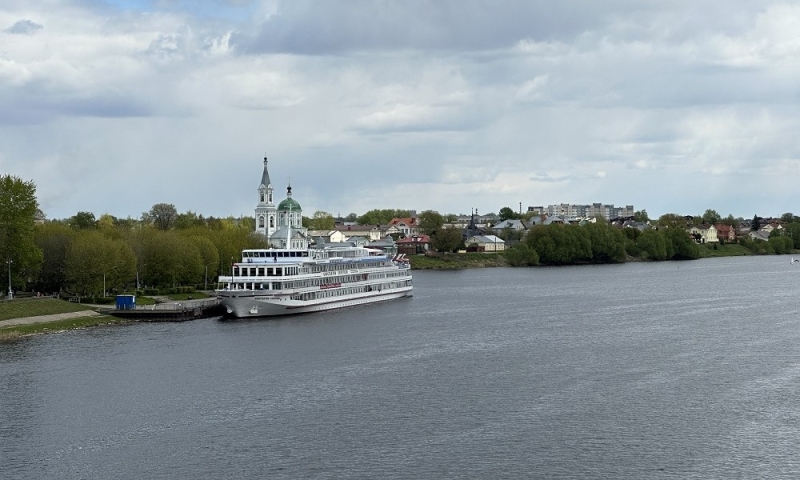
To the left, hidden in the thickets are the ruins of the former River Station building. Author: Maria Balareva
Museum of Tver Life

Author: Maria Balareva
You can immerse yourself in the traditions of antiquity and look at the artifacts of urban culture of different layers of the population of Tver in the museum complex in the Zavolzhsky district (Gorky Street, 22A), located in the 18th century building of the mansion of the ancient merchant family of the Arefievs.
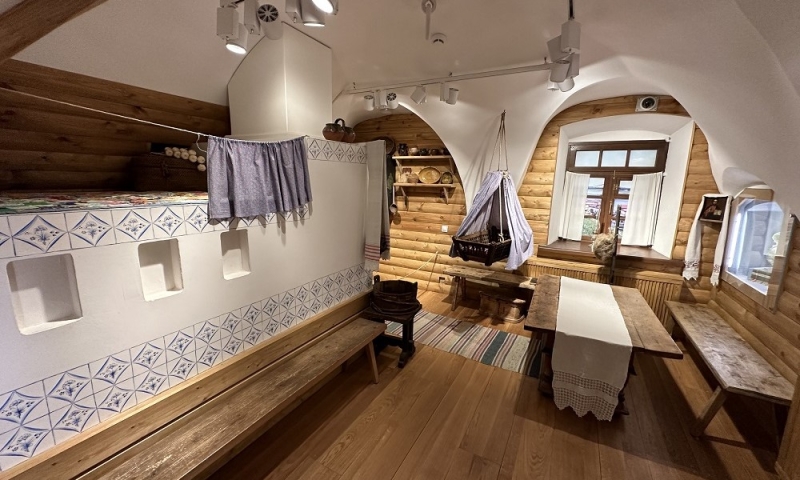
Author: Maria Balareva

City estate on the territory of the Museum of Tver Life. Author: Maria Balareva
Working hours: Wednesday to Sunday from 10 to 18, closed Monday and Tuesday.
Prices vary from 50 to 150 rubles*.
Proletarsky district
The Morozov Barracks, or Proletarka’s Courtyard, in the district of the same name in Tver are also worth a visit. Workers of the Tver Manufactory lived in this unique complex of brick masonry buildings, erected in the mid-19th – early 20th centuries by Varvara Morozova.
Once it was a whole village with its own theater, hospital, police station and shops, but now the residential complexes require reconstruction.
What to see in Torzhok
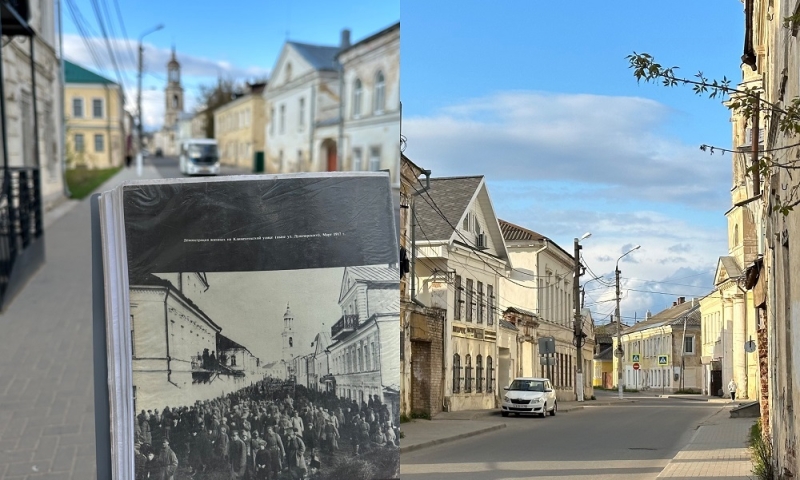
On the streets of Torzhok. Author: Maria Balareva
One of the oldest cities in Russia, Torzhok was once an outpost of the Novgorod Republic and played the role of the largest trading center in Rus’. “New Torg”: this is where the name of both the city itself and its inhabitants, who to this day prefer to be called novotor, take their origins.
It’s good to come to Torzhok to take a break from the bustle of big cities, hear echoes of the history of Ancient Rus’, touch such historical monuments as birch bark letters, marvel at the beauty of Torzhok gold embroidery in the museum of the same name and, of course, try Pozharsky cutlets .
Novotorzhsky Kremlin
During its almost thousand-year history, Torzhok has experienced tragic upheavals more than once. In 1238, after a two-week siege by Mongol-Tatar troops, the city was burned and its inhabitants were killed, as evidenced by excavations. Later, after many raids, Torzhok was fortified and turned into a fortress.

Author: Maria Balareva
The Kremlin existed until 1742, but was buried in fire. Now only the embankment remains of it, and historical reconstructions are taking place on its former territory.

Pseudo-historical exposition of the Novotorzh Kremlin, ramparts. Author: Maria Balareva

The Annunciation Cathedral (Church of the Archangel Michael) with bright blue domes is clearly visible when climbing to the upper settlement from the remains of the Kremlin. Author: Maria Balareva
Boris and Gleb Monastery
According to legend, the Boris and Gleb Monastery, one of the three oldest on the territory of modern Russia, was founded earlier than the Kiev Pechersk Lavra, or rather, shortly after the Baptism of Rus’, in 1038. It grew out of a hospice house (almshouse), founded here by the former princely equerry boyar Ephraim, originally from Hungary.

Boris and Gleb Monastery. Author: Maria Balareva
During the Soviet period, the monastery served as a women’s prison: the prisoners’ beds were suspended from the walls of the main temple of the same name. Then the building served as a dispensary, but at the end of the 90s, liturgy returned to its walls.

Author: Maria Balareva
For a nominal fee of 100 rubles, it’s worth climbing the belfry of the Candle Tower. From there you can see the piercing beauty of the wide blue Tvertsa River.

View from the belfry. Author: Maria Balareva

From the belfry you can see the entire monastery ensemble. Author: Maria Balareva
The Travel Palace, or what remains of it
In 1776, by decree of Catherine the Great, a travel palace was built in Torzhok for the rest of the imperial person. Built according to the design of the architect Nikitin, who restored Tver, the palace was an example of classicism.
Its purpose changed over the following centuries: the building was used for a hospital and an orphanage, and then it housed a girls’ school and a gymnasium.
Today the travel palace stands in complete desolation, although it is under the supervision of private guards. Entry closed to tourists.
Post stairs
In terms of the number of churches, Torzhok can definitely compete with Suzdal. In each of them there are more than 30 churches and monasteries, although in Torzhok only about 10 are active. For example, the ancient Resurrection Monastery is now in disrepair.
The Postal Staircase runs along the former monastery, the first mention of which dates back to the 16th century. This is a descent 140 m high, after overcoming which you find yourself at an observation deck with a view of the entire Torzhok.
Continuing your descent to the river, you find yourself on Tveretskaya embankment, the calling card of Torzhok. Architecturally, it resembles the uniform facades on the embankments of Tver.

View of the Boris and Gleb Monastery. Author: Maria Balareva

Pedestrian bridge with kiosks selling souvenirs from local crafts (gold embroidery, linen). Behind it is the Clement Church. Author: Maria Balareva
Gastronomic route
In Tver
For a truly Russian lunch, it is best to go to the restaurant “Manilov”, where they serve potato pancakes, pork knuckle and pike perch in a pot.
Restaurant “Tbilissimo/Felicita” in the center of Tver on Trekhsvyatskaya street offers Italian and Georgian cuisine.
In the cafe Testo guests will immerse themselves in a vintage atmosphere: brickwork, antique lampshades, pop art paintings. The menu is varied – from Dutch and French breakfasts to cabbage rolls and borscht.
In Torzhok
Torzhok left its mark on the gastronomic culture of Russia, because this is where those Pozharsky cutlets come from. Contrary to some prevailing opinions, this dish has nothing to do with Prince Pozharsky. In the 19th century, cutlets were served in the tavern at the Pozharskaya Hotel (now Dzerzhinsky Street, 48). And the Russian dish in the form in which we know it now became popular thanks to Daria Pozharskaya, the daughter of the hotel owner Evdokim. Even Emperor Nicholas I himself appreciated cutlets.
Local residents say that the best Pozharsky cutlets are now made in the hotel restaurant “Onyx”.
For Russian and local cuisine, you should go to the restaurant “Lira”: the menu includes an ancient dish called kalya, Pozharsky cutlets and Tver cabbage soup.
You can also have lunch or dinner at the restaurant “Gothina” at the Staroyamskaya hotel. Russian and European dishes and excellent liqueurs, including locally produced ones, are served here.
Locals recommend drinking coffee or herbal tea with sweets in the atmospheric coffee shop “Angelov” with a view of the Tvertsa River.
*Prices are current at the time of publication.
